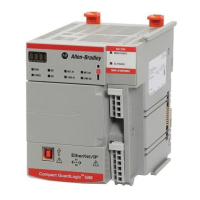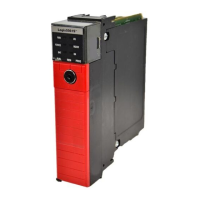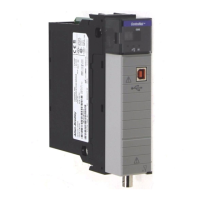
Do you have a question about the Allen-Bradley 1756-L63S ControlLogix 5563S and is the answer not in the manual?
| Product Series | ControlLogix |
|---|---|
| Model Number | 1756-L63S |
| I/O Capacity | 128, 000 I/O |
| Number of Tasks | 32 |
| Number of Programs per Task | 100 |
| On-chip nonvolatile memory | 512 KB |
| Redundancy | Yes |
| Relative Humidity | 5 to 95% non-condensing |
| Shock | 30 g |
| Communication | EtherNet/IP, ControlNet, DeviceNet |
| Communication Ports | Ethernet port, RS-232 serial port |
| Operating Temperature | 0 to 60 °C |
| Series | ControlLogix |
| Controller Type | Programmable Logic Controller (PLC) |
| Battery Life | 5 years at 25 °C (77 °F) |
| Certifications | UL, CE, cULus |
Describes the process of adding I/O modules to a controller's I/O configuration.
Defines the RPI and its role in controlling I/O data update frequency between devices.
Explains data structures determined by communication format and controller-module relationships.
Enables automatic comparison of physical modules to configured settings to prevent communication errors.
Details the standard format for addressing I/O data points using tags and their components.
Explains the technique of using copied I/O data to prevent scan-time value changes in logic.
Explains the use of alphanumeric tag names for addressing variables and data within a controller.
Defines various data types available for tags, such as integers, real numbers, and strings.
Differentiates between controller-scoped (global) and program-scoped (local) tags and their accessibility.
Provides step-by-step instructions for creating and editing tags using the Logix Designer Tag Editor.
Explains the creation of custom data structures (UDTs) to organize complex data related to machinery.
Describes using forces to override logic for debugging, testing, or temporary process control.
Highlights critical safety considerations and potential risks when using forces in automation logic.
Explains the process of enabling I/O and SFC forces at the controller level for active operation.
Details the methods for disabling or removing active forces to return logic to normal operation.
Explains how to force specific input or output tag values, overriding normal logic execution.
Introduces tag attributes that control how external applications access and modify tag data.
Details how to set external access attributes (Read/Write, Read Only, None) for tags.
Explains designating tags as constants to protect their values from programmatic modification.
Provides steps for setting the constant attribute for tags via dialog boxes or the Tag Editor.











